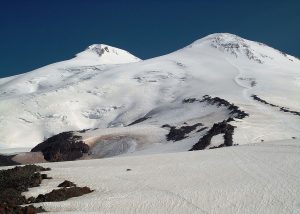
Mountains have always been mystifying and inviting. Humans, since the earliest of time, are always on the missions to conquer the tops of these giants to for different reasons. People who regularly climb mountains will tell you that it is addictive, like there is a magical call to them. If you are a climber, then you would agree to one or more of these points about why mountain climbing could feel so good:
- It refreshes your body, soul, and mind
- You get to see the view that not everyone can see
- The mountains make you feel small, thus humble you down
- You will understand why the Earth needs to be taken care of
- It will teach you gratitude and positivity
There are legendary mountains that usually make it to the list of top ten peaks to conquer; Kilimanjaro in Tanzania, Mount Everest in Nepal, Denali in Alaska, Damavand in Iran, The Andes of Peru, Mount Khuiten in Mongolia, Annapurna in Nepal, The Matterhorn in Switzerland, and Mount Elbrus in Russia. The last one, Elbrus, is actually more of an inactive volcano rather than a mountain and this is what we are going to look closer at. We will see why the peak of Elbrus is so deadly for mountain climbers.
A unique feature of Mount Elbrus is that it has two summits which both are volcanic domes. The one on the west is 5,642 meters high, and the one on the east is 5,621 meters tall. Both were first conquered on the 1800’s by Khillar Khachirov (east) and a group of British expedition (west.) Many people have succeeded at ascending the peak of Elbrus since then and this proves that, even though highly dangerous, it is very possible to climb to the top. In 1976, a cable car system was finished and it can take climbers up to the height of 3,800 meters. To continue to the summit, they have to go on foot. About 100 climbers go up to the peak of Elbrus during summer.
Climbing Elbrus could be a harsh experience during winter because of the extreme weather and strong winds. Its location, which is between the Caspian Sea and the Black Sea, is what makes the wind gets wild up on the Mount Elbrus. There are several paths to reach the summits; the first one is called the Standard Route or Normal Route that is most commonly used by the visitors to climb up to the south after the end of the cable car system. People choose this path because it is free of crevasses but actually challenging because of the thick snow and elevation. So it is good to keep in mind that the absence of cracks doesn’t guarantee a safer path. Climbers are advised to stay on the path because going off of it could lead to a dangerous terrain.
Another route is called Kiukurtliu Route, which is harder and longer than the Normal Route because it starts from below the cable car station and encounters a lot of glaciers. To get to the peak from this route, a climber should prepare a tent, an axe, rope, and crampons. It usually takes three nights to reach the summit from the beginning of this path. Definitely not for beginners.
If a climber has made it to the top, the journey back down is just as challenging and sometimes even more dangerous than the climbing. There is a part of the mountain named saddle, which is the region surrounding two high points of a mountain or hills, than can be dangerous if travelled with wrong calculation. When it gets stormy, turning back from the peak could be very steep and feature crevasses and falls. It is advised to wait on the slope of the east summit until the weather is conducive. The best time to climb Elbrus is around July and August when the weather is relatively stable. During the summer, the temperature on Elbrus at night could go as low as -8⁰C while during the winter it could drop to -30⁰C even during the day. With lack of preparation and equipment, this extremely freezing temperature could be life-threatening. Very few mountaineers attempt to climb Mount Elbrus during the winter because of the brutal weather. Ones that still try to go are very experienced climbers who have gone there before.
The number of fatality on Mount Elbrus reaches fifteen to thirty lives annually. The major causes are lack of planning, organization, and equipment. Good climbers would testify that climbing Mount Elbrus is one of the easiest and fastest ones compared to the other six highest summits in Europe. Race to go up to the summit is not a strange occasion. Once, in 1956, four hundreds mountaineers climbed Mount Elbrus together to celebrate the 400th anniversary of the joining of Kabardino and Balkaria. So it is clear that the only thing that could endanger a climber while trying to conquer the summits of Mount Elbrus is their lack of experience.
All in all, we can conclude that the most dangerous aspect that makes the peak of Elbrus is so deadly for mountain climbers is the weather. The second thing is the condition of the land that must not be taken lightly because different path means different obstacles, so a climber should choose wisely and get to know what they would face before trying to climb. It should not be hard to find references and lists of what one should and should not do, what to bring and prepare, itineraries, point to start and end, et cetera. Even though once the government of Soviet Union encouraged people to ascend the peak of Elbrus, it is still not a journey that can be done by just everyone.
